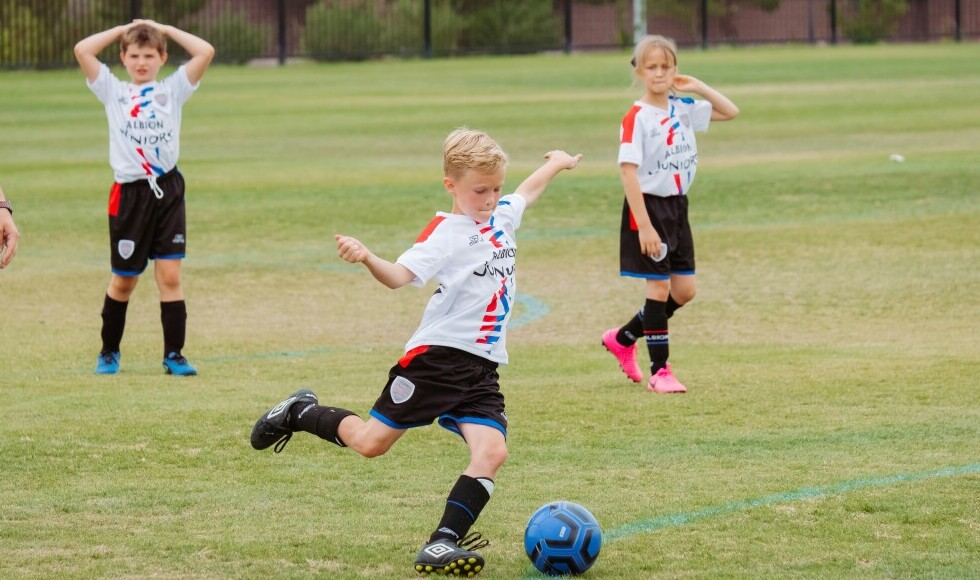
Ball control is like the backbone of any soccer player’s skill set. If you can’t control the ball, the rest of your game suffers. Think of it as your foundation because every pass, dribble, and shot starts with good ball control.
One way to amp up your ball control is through consistent practice, focusing on the fundamentals. This includes simple touches like trapping the ball with different parts of your feet—inside, outside, and even the sole. Vary the practice to include controlling the ball from air and ground passes.
To really level up, mix up your training with a range of drills. Cone drills, for one, can be super effective. Set up a series of cones and weave the ball through them using controlled touches. Another great drill is juggling. Start with basic foot juggles and gradually add in other parts of your body like thighs and shoulders.
Professional players offer some great inspiration. Look at players like Lionel Messi or Ronaldinho, who treat the ball like it’s glued to their feet. Watching their footwork and ball control techniques can teach you a lot. Replicating these pros can give you a visual idea of what perfect ball control looks like.
Incorporating a mix of solo and partner training can also bring significant benefits. When you’re alone, focus on mastering the basics. When you’re with a partner, you can practice more dynamic, game-like scenarios. This holistic approach helps you get comfortable with the ball in a variety of situations.
Perfecting the Art of the No-Look Pass

The no-look pass isn’t just flashy; it’s highly effective for fooling defenders and creating scoring opportunities. It’s basically when you pass the ball without looking directly at your teammate, making the opponent think the ball is going elsewhere.
Mastering this skill starts with actually having solid passing skills. You need to feel comfortable with standard passes before you can experiment with taking your eyes off the ball’s destination. Start by practicing with a stationary target until you’re nailing the pass every time.
Developing your peripheral vision is critical here. Simple exercises like side-to-side eye movements can help. Try to keep your head still while moving your eyes, focusing on different objects around you without turning your head. This will help you become more aware of your surroundings.
The next step is working on the fake. This is where the ‘no-look’ part happens. Use your body and eyes to mislead the defender. Look one way and pass the other, making sure you’re still using proper passing technique.
While practicing, keep an eye out for common mistakes. Sometimes players look too obviously in one direction, or their body language gives away the pass. It’s essential to remain relaxed and fluid to sell the fake.
Regular practice can make this skill second nature. Start incorporating it into your drills and scrimmages. Over time, you’ll find that defenders start to fall for your no-look more often, opening up the field for better plays.
Advanced Dribbling Techniques to Outsmart Opponents
Dribbling isn’t just about speed; it’s about deception and control. Mastering advanced dribbling techniques can set you apart on the field, making defenders struggle to keep up with you.
Start by learning moves like the Elastico, which involves a quick flick of the foot to change the ball’s direction sharply. Another trick to add to your arsenal is La Croqueta, where you drag the ball sideways with the inside of your foot to slip past defenders.
Practice these moves slow at first. Get comfortable with the motions before trying them at full speed. Break down each move into steps. For the Elastico, work on the flick, the change of direction, and the recovery. For La Croqueta, focus on the drag and the quick sprint after.
Dribbling drills can be very effective. Set up cones and practice weaving through them using advanced moves. Another useful drill is the 1v1 challenge, where you face off against a partner, attempting to dribble past them using your newfound skills.
Being proactive on the field is crucial. Instead of reacting to defenders, force them to react to you. Use your advanced dribbling skills not just to get past one opponent but to set up plays and create scoring chances.
Lastly, watch footage of players known for their dribbling skills. Think Neymar or Eden Hazard. They make the game look effortless with their dribbling precision. Breaking down their footwork and implementing it into your training can provide real benefits.
Developing Tactical Awareness and Soccer IQ
Tactical awareness and a high soccer IQ separate the good players from the great ones. It involves understanding game dynamics, anticipating plays, and making smart decisions quickly.
Training your brain is just as important as training your body. One way to boost your tactical awareness is by watching high-level games. Focus on player movements, formations, and decision-making processes. See how they react in various situations.
Incorporate situational drills into your training. Play out different scenarios, like defending a corner kick or managing a counter-attack. These drills help you recognize patterns and make quicker decisions during actual games.
Another strategy is to study game footage of yourself. Analyzing your own play can highlight areas of improvement and provide insights into better positioning and movement.
Listening to experienced coaches and players can also offer valuable perspectives. Their advice often stems from years of experience and can help you understand the nuances of the game.
Lastly, never stop learning. Soccer is an evolving sport, and staying updated with new tactics and strategies can give you an edge. Attend workshops, read articles, and always keep your mind open to new ideas.
